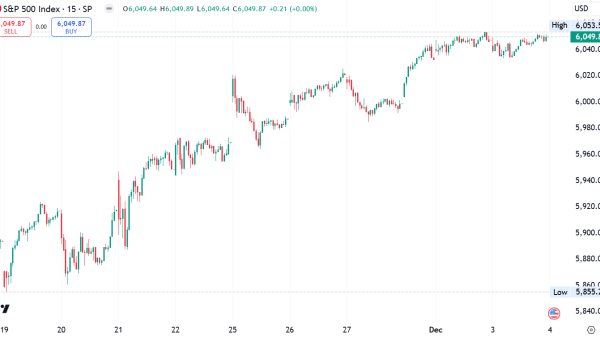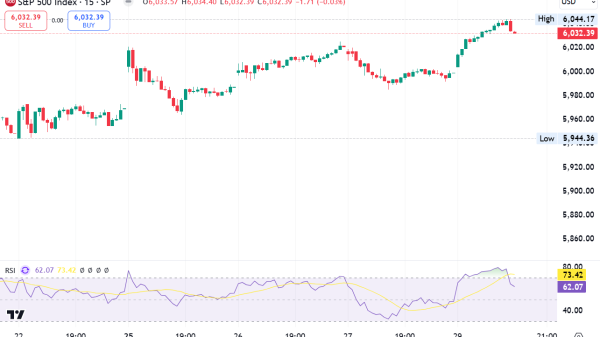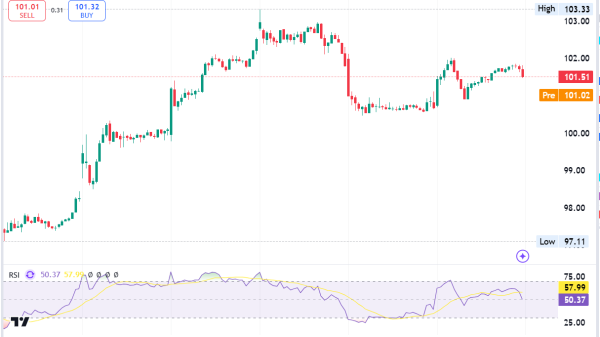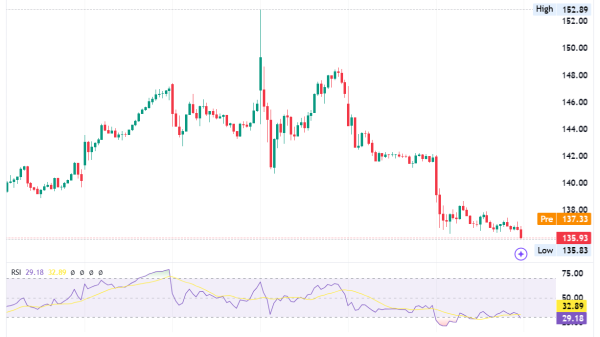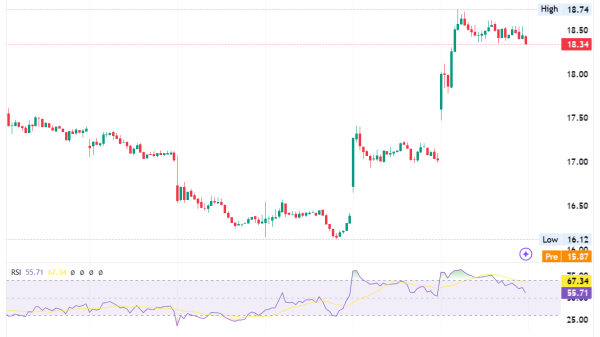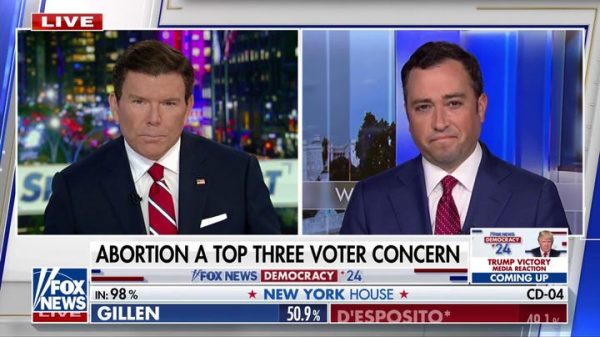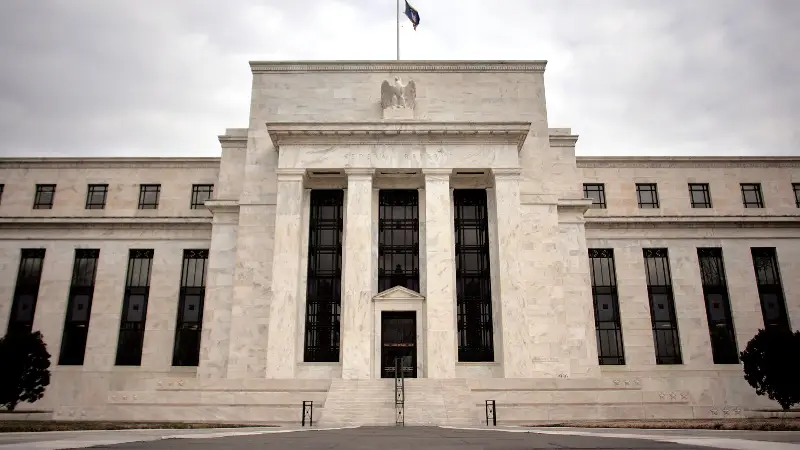Market Trends Dictated by Fed’s Upcoming Decision
An impactful force could soon influence the rapidly moving stock market trends. Last week, US stocks saw increased volatility as investors navigated a sharp selloff in big-tech stocks, shifting their focus to small-cap and value stocks.
This movement, known as the “Great Rotation,” has been one of the key market movers in July. The shift was somewhat inevitable.
The Magnificent Seven stocks had an exceptional start to the year. Among its stocks, Nvidia Corp. (NVDA) shares rose nearly 150% in the first six months of 2024. Moreover, Meta Platforms Inc. (META) kept increasing by over 42%. Their impressive growth boosted major stock indexes but also led to an unusually narrow range of trends in the stock market.
The tech selloff marked a reversal as Magnificent Seven stocks fell and entered correction territory. This decline pulled down the S&P 500 and Nasdaq Composite Index, both of which are heavily weighted with tech stocks.
On July 26, the Russell 2000 surged by 10.2%, tracking small-cap stocks over the past 12 trading days. It outperformed the S&P 500 by 13.3%, marking the largest 12-day outperformance ever. Additionally, it exceeded the gains of the Nasdaq by 17.1%, representing its second-largest 12-day outperformance.
Russell2000/USD 5-Day Chart
Russell 2000 Bulls Poised for a Comeback
On Friday, the Russell 2000 achieved a 3.5% weekly gain, outperforming the three major equity indexes. Over the past few weeks, the Russell 2000 Index ($IWM) has consistently tested the $225 resistance level on strong trading days. Friday’s session ended with a doji, indicating some remaining trader indecision before a potential breakout. Relative performance increased, with other technical indicators remaining positive.
The weekly chart for the Russell 2000 appeared more straightforward. The large upper spike from the previous week could have signalled a reversal, but last week’s trading reduced that uncertainty. However, the weekly buying volume was lower than desired, indicating no confirmed accumulation.
Today might see some weakness, but as the week progresses, expect the bulls to regain control. In contrast, the Nasdaq had a quieter Friday, with fewer Nasdaq gainers making headlines. Its narrow intraday range followed the earlier break of the week’s 50-day moving average. Technical indicators are bearish at the moment. Therefore, both the S&P 500 and Russell 2000 indexes are underperforming.
However, the continuation of this trend may depend on a major upcoming event — the July FOMC meeting next week.
Key Market Trends to Watch in the Upcoming Fed Meeting
The Federal Open Market Committee will convene on July 30 and 31. The Fed has not expressed any plans to lower rates during this meeting.
Adjustments in interest rates significantly impact the economy, influencing different sectors in various ways. This is particularly evident when comparing small-cap and large-cap companies. In contrast, smaller firms often depend more on business loans for their operations and expansion.
Thomas Martin, a senior portfolio manager at GLOBALT Investments, mentioned that rate cuts generally benefit small-cap companies in a few ways. He pointed out that these firms tend to be more sensitive to changes in variable-rate financing, floating rates, and shorter-term rates.
Martin explained that reducing interest rates can lower the cost of loans for small businesses, potentially decreasing theiroperating expenses and boosting earnings. Additionally, lower rates might stimulate economic activity, leading to increased consumer spending. He observed that stock market trends today began shifting from large-cap stocks to small-cap stocks. This suggests that small-caps could gain even more momentum once the Fed starts reducing rates. Martin believes that the Great Rotation might persist to some degree.
S&P 500 News: Is the Selloff Coming to an End?
Market history suggests the S&P 500’s decline from its peak on July 16 might not yet be finished, according to data from the CFRA’s chief investment strategist, Sam Stovall. The S&P 500 dropped 4.7% from its high to last week’s low.
Since 1990, 68% of declines of 4.5% or more have led to pullbacks within a few weeks, according to Stovall. He defines a pullback as a drop of 5% to 9.9%.
Currently, the S&P 500 stands 3.7% below its peak. Following a recovery on Friday fueled by positive inflation data.
This dynamic could be related to the recent paradoxical rate cuts. The impact of lowering interest rates could be quite complex. Reduced rates often boost economic activity. Yet the decision to cut rates might also indicate that the economy requires additional support.
If the Fed indicates a slight economic slowdown, it could be a positive sign for controlling inflation. However, if the slowdown is too severe, it increases the risk of a recession.
Small-cap companies, being less shielded from economic downturns, are particularly vulnerable to such slowdowns. In this scenario, large-cap firms are holding a more grounded position. Consequently, Fed Chair Powell’s response to stock market trends and this issue will be under close monitoring.
Fed’s Tough Road Ahead: Unpromising Close of the Week
The Dow Jones Industrial Average finished the week strong, rising 1.6% on Friday and achieving an overall gain of roughly 0.8% for the week. The S&P 500 and Nasdaq Composite also saw increases on Friday but ended the week with losses.
To be more precise, the S&P 500 dropped 0.8% over the week, and the Nasdaq fell by 2.1%. The S&P 500 and Nasdaq experienced two consecutive weeks of declines, whereas the Dow achieved its fourth consecutive week of gains.
Small disruptions in the labour market and the economy could prompt the Fed to start reducing interest rates. The central bank is working to engineer a smooth economic transition, but this task will likely be difficult to execute effectively.
Investors still need to determine whether these minor issues in the economy will develop into more significant problems. If they do, stock market trends could take a downward trajectory.
However, at the moment, the Fed is navigating a challenging path toward a smooth economic transition. Keeping up with the same path would bring an ideal outcome. However, the future course remains uncertain.
In addition to the FOMC meeting conclusion on Wednesday, traders will focus on Tuesday’s job openings report. Other important indicators will be Wednesday’s ADP employment figures and Friday’s US unemployment rate. These will determine the US labour market and the economy’s overall health.
The post Market Trends Shift: Anticipating the Fed’s Impact on Stocks appeared first on FinanceBrokerage.











